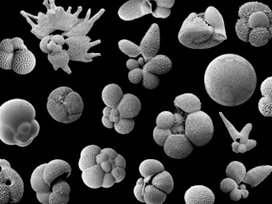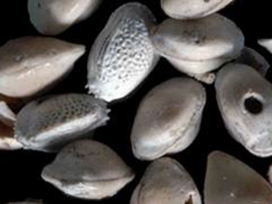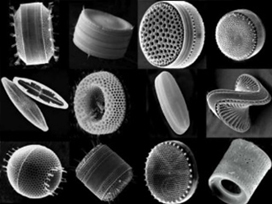Biostratigraphy uses microfossils to distinguish between layers of
rock deposited at different geological time intervals. Biostrat JV expertise extend from the
Paleozoic to Cenozoic, offering the most suitable biostratigraphers for even the most complex
geological regions.

Purpose and Importance
-
Monitor stratigraphic development of wells
-
Determine casing points, coring sections or well TD
-
improve seismic calibration real-time
-
Steer horizontal wells while drilling to maintain position within a reservoir to
maximize
recovery
-
Identify zones of borehole instability
-
Monitor coring programs
-
Real-time calibration and correlation of important seismic markers and regional
sequence
boundaries
Biostrat JV offers full 24-hour wellsite monitoring using two rotating biostratigraphers and
certified technicians who prepare drill cuttings for observation of micro- and nannofossils.
Wellsite biostratigraphy requires minimal processing equipment and no hazardous reagents.

A multidisciplinary approach may include any combination of the principle microfossil groups to
attain the highest resolution and certainty in assigning biostratigraphic zones.
Micropaleontology
Paleozoic-Recent marine sediments
Foraminifera

Ostracods

Diatoms

Radiolaria

Nannopaleontology
Triassic - Recent marine sediments
Calcareous nannofossils, also known as coccoliths.

Palynology
Phanerozoic marine & non-marine sediments
Plant matter such as spores & pollen

Dinoflagellates

The microfossils trapped in rocks also provide details of the environmental
conditions during sedimentation. Biostrat JV biostratigraphers have a minimum M.Sc. in relative
paleontological fields and well established experience consulting in the Caribbean, Latin
American and Gulf of Mexico regions. Biostrat JV methods are fully quantitative and allow for the
most reproducible models of:
-
Basin bathymetry & paleoshorelines
-
Paleoclimate & oceanography
-
Dissolved oxygen concentrations, salinity, pH & nutrient flux

Microfossil data is delivered in
Stratabugs TM format and allows for the best:
-
Recognition of regional sequence boundaries, systems tracts and maximum flooding surfaces
-
Paleo-water depth and sediment distribution interpretation for each rock sequence
-
Model basin eustasy to account for rates of sediment accommodation within the basin
-
Identify exploration play fairways and connectivity
A multidisciplinary approach may include any combination of the principle microfossil groups to
avoid barren intervals and attain the most information.
Micropaleantology
Paleozoic-Recent marine sediments
Foraminifera

Ostracods

Diatoms

Radiolaria

Nannopaleontology
Triassic - Recent marine sediments
Calcareous nannofossils, also known as coccoliths.

Palynology
Phanerozoic marine & non-marine sediments
Plant matter such as spores & pollen

Dinoflagellates

Biostrat JV uses macro and micro benthos to assess marine environments prior to and
post drilling or construction activities. This is essential to attaining permits and meeting
environmental requirements.
Biostrat JV in-house micropaleontologist has obtained a Ph.D. qualification in tropical
foraminifera for biomonitoring. Biostrat JV has conducted extensive
Environmental Baseline Surveys (EBS) offshore Trinidad and
elsewhere in the Caribbean region. This database of species distributions is an indispensable
resource for identifying persistent community changes related to human activity or long-term
climate change.

Quantitative analyses of live and dead species are obtained via grab samples
of seafloor sediment.

Live specimens are distinguished from dead specimens by using a protein
stain, rose bengal, that stains the living cytoplasm pink.
Species presence and absence is determined by a unique range of tolerance for environmental
factors such as temperature, pH, dissolved oxygen, food supply, water circulation, sedimentation
and turbidity.

Foraminifera test deformities related to anthropogenic pollution

Quantitative sedimentary analysis provide details of the energy and chemical
composition of the environment during deposition.
Microfossils are used to assess geohazards and determine the most stratigraphically sounds sites
for rigs and other installations.
Site hazards include
-
Heavily faulted areas
-
Areas Prone to slumping
-
Relatively young or unconsolidated sediments
-
Mass movement processes
-
Seismic agitation
-
Liquefaction of rock layers
Microfossils will detect geological hazards and play an important role in avoiding
exorbitant
re-mobilization or re-instillation costs.















